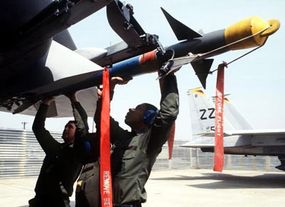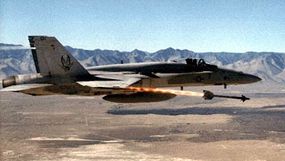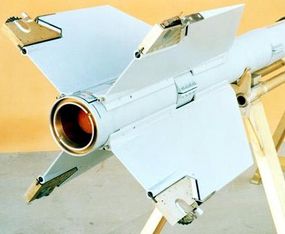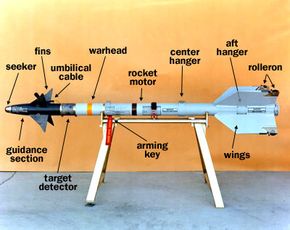The System
To see how all these pieces work together, let's examine a typical attack sequence.
Before launching, the missile sits under one of the aircraft's wings, mounted to a launcher on the wing by several hangers. An "umbilical cable" near the nose of the missile connects the onboard electronic control system to the aircraft's computer system. When the pilot gets the plane in position -- ideally, behind the enemy -- he or she activates the fire control. The aircraft computer sends a command to the missile control system to activate the Mk 36 rocket motor and release the missile.
Advertisement

The rocket motor burns up solid propellant material to generate a high-pressure gas that streams out the back of the missile (the motor uses special low-smoke propellant material to help hide the missile from the enemy). This provides the initial thrust necessary to get the missile off the launcher and push it through the air at supersonic speeds (the current model flies at about Mach 2.5). Once the propellant has burned up, the missile glides the rest of the way to its target.

Each of the four rear wings, which provide the necessary lift to keep the missile flying, is outfitted with a simple stabilizing device called a rolleron. Basically, a rolleron is a metal wheel with notches cut into it. As the missile speeds through the air, the air current spins the rolleron like a pinwheel.

If you've read How Gyroscopes Work, you know that a spinning wheel resists lateral forces acting on it. In this case, the gyroscopic motion counteracts the missile's tendency to roll -- to rotate about its central axis. The simple, cheap rollerons steady the missile as it zips through the air, which keeps the seeker assembly from spinning at top speed. This makes it a lot easier to track the target, as we'll see in the next section.
